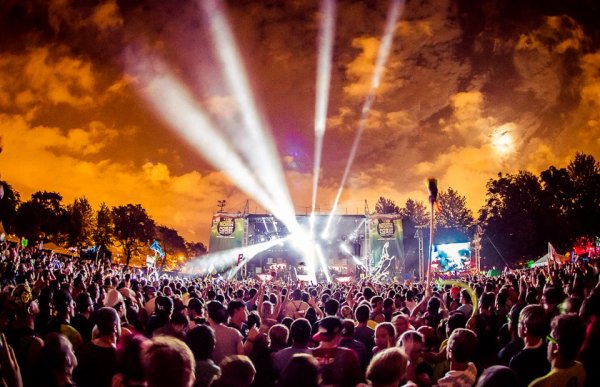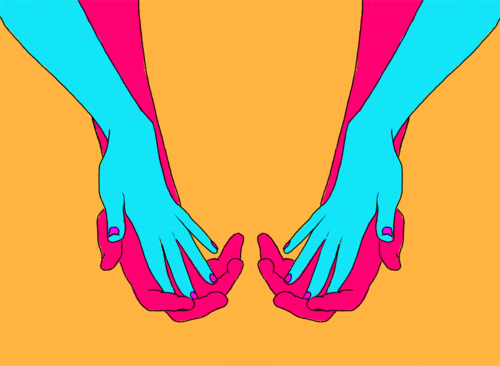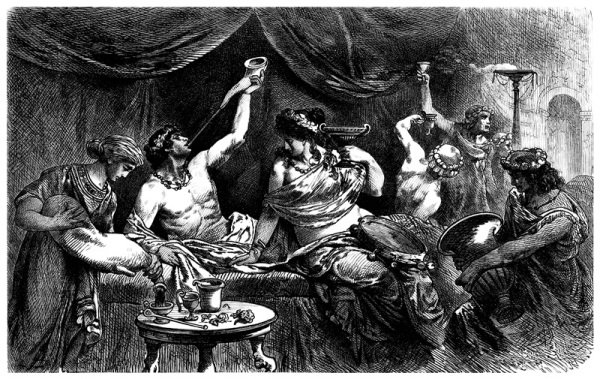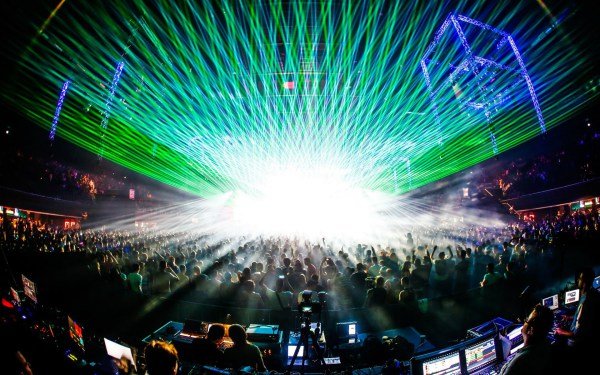
Dancing invokes a heightened emotional state characterized by positive feelings and infectious enthusiasm. Rarely does the urge to hurt or threaten another human result from harmoniously moving, swaying, and stepping to the rhythm and thump of a beat. Dance will therefore always be loathed by those that dwell in the chambers of power.
The elite hate it because dance is the greatest form of individuality...individuality that is intertwined with togetherness. It is a glorious celebration of sovereignty and unity. It also increases awareness of the majestic nature of the human spirit, thus compelling people to dissolve boundaries and undermine social mores.
Plato said, "music and rhythm find their way into the secret places of the soul." That secret place is the wellspring of spiritual preservation and absolute freedom from tyranny.
In this article, I will explore dancing from the RAVE perspective and why it attracts people who desire to undermine the control freaks and fascists, and why it embodies the human quest for freedom.

What is a Dance Rave?
RAVE stands for radical, audio, visual, experience. Raves represent musical performances that employ DJ's who make live music that consists of repetitious beats and various electronically-manufactured sounds.
These RAVE festivals intensify every sensory and perceptual faculty of the person, including the visual aspect, because light shows, lasers, and glow sticks are indispensable pieces of the dance formula.
Ravers expect to experience a kind of multi-sensory orgasm, which suggests that sexual feelings are also an important facet of the scene, even if the people are not actually having sex.
Tactile expressions are also important. The revelers, besides the feel of dancing, often touch each other and dance together, adding to the enjoyment and appreciation of the total experience, while all negative judgment and social anxiety is withheld, inhibited, forgotten, or dispelled.
Nowadays, some people call RAVES music festivals or ambiguously refer to them as part of the scene.

RAVE history and its Pharmacological Aspect
The scene became popular in the 80's, but gained momentum in the 90's and 2000's. It probably began as an offshoot of London subculture activity, namely Bohemian parties and the mods of the 50’s.
In the United States, large cities, especially Chicago and Dallas quickly became hubs of dance music connoisseurs. The Dallas music culture, however, has been instrumental in combining the rave aesthetic with the psycho-neurological experience of the designer drug MDMA. The Dallas rave scene in the 80’s was the center of ecstasy experimentation.
In the book E is for Ecstasy, Nicholas Saunders described it:
“In Dallas and Fort Worth, Texas, Ecstasy was even on sale in bars where you could pay by credit card, where it replaced cocaine as the drug of choice among yuppies and even spread to people who normally kept well clear of drugs.”Rave shows have also often cropped up as public promotions in the form of music festivals or underground warehouse parties. Festival-goers appreciate any abode or locale capable of producing sound without disturbing the peace or inciting police interference.
Sometimes, these parties even occur in natural settings, like jungles or mountaintops, which give settings a tribal and primitive appeal, further intensifying the experience and providing it with a mystical or pagan flare.
There are likewise many different types of people who rave. The group is open-minded and eclectic. It is composed of freethinkers, hippies, dance enthusiasts, iconoclasts, scientists, writers, anarchists, activists, homosexuals, transsexuals, rednecks, and suburbanites; and they all join together spontaneously, in an explosion of love and transcendence, which is why the scene is known for its tight-knit family culture.

Anti-Culture and Reactance
The scene is not just a culture or subculture, though. Some call it a “counterculture.” It may even be a kind of anti-culture, anathema to everything traditional cultures value and cherish. Rave culture desire to return humanity to a time of ecstasy, harmony, and oneness with others and nature, thus its spiritual undertones.
As Terence McKenna inferred, tribal dance is kind of archaic revival, an appreciation of feminine qualities of love, peace, kindness, empathy, and togetherness. It is a celebration of human dignity and the unification of the species into a glorious whole. Ravers also use the acronym PLUR, which means peace, love, unity, and respect. This slogan embodies the whole community of rave dancers.
Indeed, dance is the ultimate “we” as expressed through the poetry of sound and movement. It is the way people overcome repression and psychological distress. It is cathartic, and it allows people to release pent-up feelings that have been writhing and undulating beneath the raging fire of consciousness.
The Tragedy of Culture
Tragically, modern culture induces this psychological repression and pent-up anger. Rampant violence and authoritarian rules are the common threads woven through the fabric of society, so it is no wonder ravers find each other and express themselves so elegantly and spiritually.
Everywhere people look, there are police officers murdering innocent civilians, parents beating and coercing children, strangers shooting strangers at stoplights, religious fundamentalists decapitating religious apostates, and governments enslaving and imprisoning billions of people for pocketing plants or having sex for money. The world is a muck-filled shit show, built on the blood of slaves and maintained by droves of drooling, hypnotized zombies.
Without knowledge and experience of dance and all of its concomitants, everyone would be entranced by only culture they know: the culture of violence. Luckily, the RAVE scene emerged as a form of group reactanceagainst the brutality of authoritarian sociopaths and their regimes.
Psychological reactance was advocated and researched by Dr. Sharon Brehm and her husband. The idea is simple. When people are told to behave or act in a specific way, or are tethered down to enforced routines, these people will react against social norms and rules. They will do precisely the opposite of what is expected of them. It implies people who are threatened to conform to a decadent culture will rise up and rebel against that culture.

Ventilate and Rage Against the System
The rave scene, then, can be seen as the social-wide movement of anti-authoritarian people looking to ventilate repressed anger and symbolically rage against the system.
They will do whatever it takes to secure their freedom, even if it means they will be punished or harmed. Without delving into any specific statistics, if one just looks back at history, they can see children, peasants, and other downtrodden groups attempt to counteract their oppression. They each do it in their own way, and sometimes they resort to defensive violence. However, some do it by sublimation. They rebel by breaking the rules but by not harming anyone, which is why the rave scene has proliferated in the last few decades.

Raving is the Ultimate Form of Anarchism
Rave is thus the ultimate anti-culture; the cure for dead culture. It is an implicit act of anarchism, because dancing to repetitive music demonstrates the efficacy and needs of the psyche. Dancing is reactance, because authority figures do not totally grasp it; they cannot see the appeal or beauty. They do not see the lust for emotional expression, and that is essential to dance. It is essential to being a human.
So long as culture remains bootstrapped to aggression and led by sociopaths, the ravers will grow more bold. They will grow their spiritual domain---hey will play their music, eat their red pills, and continue dissolving boundaries. They will wake people up and manage their psychology in healthy ways. The ravers will eventually overcome the insidious nature of culture-at-large. In this sense, ravers are the ultimate anarchists and they are here to stay, dance, rave and rebel.
Posted from my blog with SteemPress : https://sterlinlujan.com/2018/08/29/the-anti-authoritarian-architecture-of-dance-and-rave/
